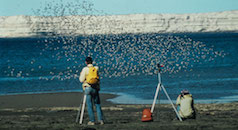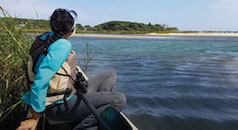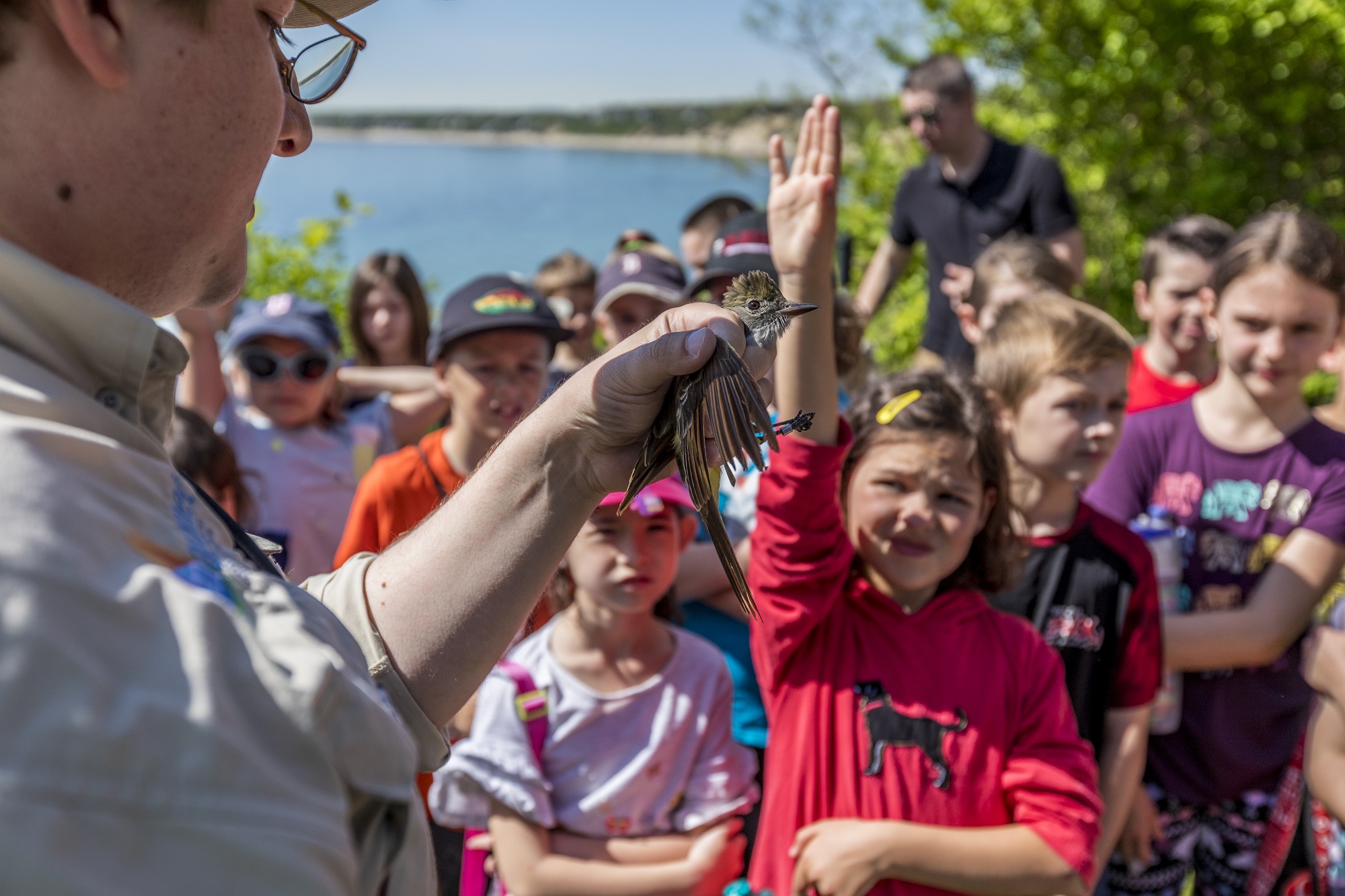This article was originally published in The Tampa Tribune on January 9, 2013. It was written by Yvette C. Hammett. View the original article here.
RIVERVIEW – The tall birds with pale pink legs and bright orange beaks congregated on a spit of sand in The Kitchen area of Hillsborough Bay Wednesday, making a census that much easier.
Mark Rachal, sanctuary manager for Audubon Florida, slowly motored toward the tiny sandbar. With binoculars and a GPS at the ready, he counted American oystercatchers in one of the more natural areas of Tampa Bay, filled with clear water, seagrass and mangrove islands, and in the more industrialized Port of Tampa area.
Scientists taking part in the first full count of oystercatchers since 2003 are following their East Coast range in propeller planes from New Jersey to South Texas. The goal of the count is to protect the birds’ nesting and foraging habitat and figure out ways to get their population to a healthy level, Rachal said.
On Wednesday staff from the Florida Fish & Wildlife Conservation Commission took to the skies between Cedar Key and Tampa Bay.
Rachal and 14 others were out, verifying the count from the ground. The census can be used by government and various environmental groups when management plans are developed for the birds.
Florida is currently in the process of writing a management plan that will cover oystercatchers, least terns, black skimmers and snowy plovers.
In some ways the cards are stacked against oystercatchers. For example, they nest close to the water’s edge. And if the island on which they nest is next to a port, as is the case here, waves from ship wakes coming through the channel can wash them out.
Rachal counted 128 oystercatchers Wednesday, perched on rip-rap near Port Redwing and the Big Bend Power Station and on the edge of Sunken Island in the Rich T. Paul Alafia Banks Bird Sanctuary.
The count is being spearheaded by Manomet Center for Conservation Sciences, a research group that will share the information with the American Oystercatcher Working Group, made up of biologists, sanctuary managers and concerned citizens from various states that share ideas and information on the status of the birds.
Janell M. Brush, a scientist with the state’s wildlife research lab in Gainesville, who helped coordinate the count called Tampa Bay “probably our top sight in the state for conservation of the species.” About 80 pairs regularly nest on natural and spoil islands here.
The resident breeding population of oystercatchers in Florida stood at about 1,000 individuals as of 2001, Brush said. Thousands more winter here, mostly in the Cedar Key area.
Brush said the results of the census should be released by Manomet within a matter of months.





 Back to all
Back to all